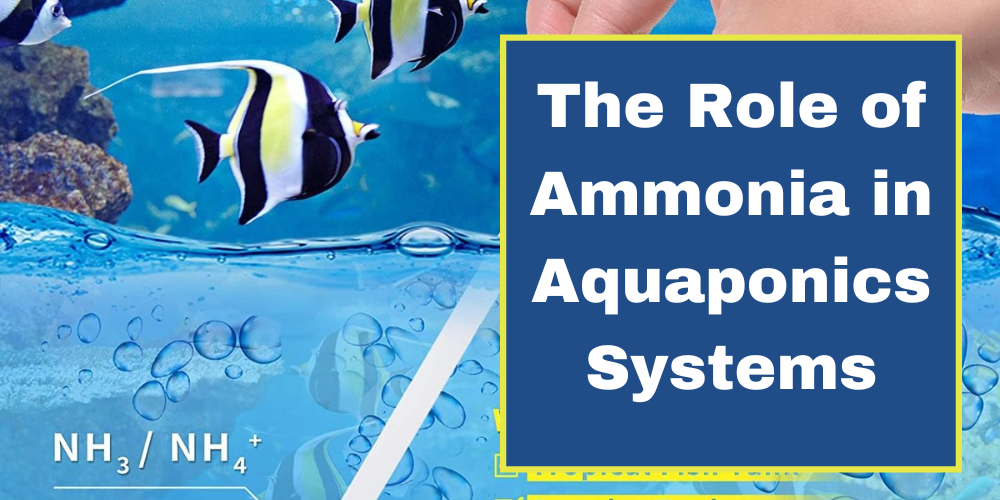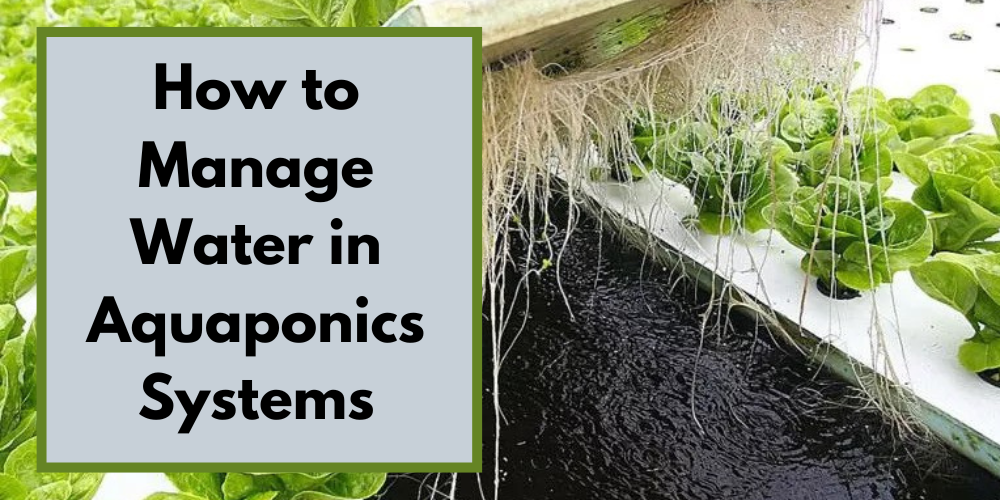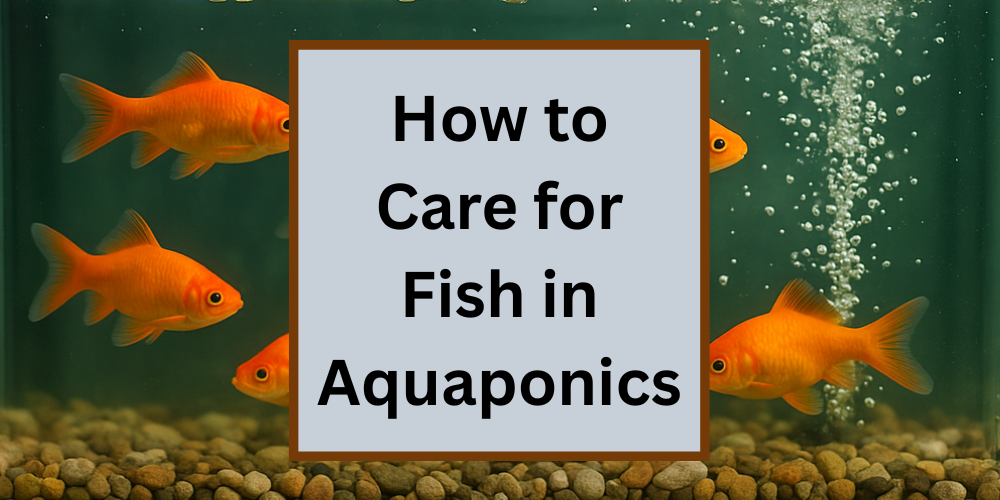Growing eggplant in an aquaponics system offers a unique opportunity to enjoy fresh, homegrown produce while leveraging the benefits of this eco-friendly gardening technique. Eggplant, with its vibrant purple hue and distinct taste, can thrive in the controlled conditions of an aquaponics setup, provided its specific growing requirements are met.
In this blog, we will explore the feasibility of cultivating eggplant in aquaponics gardens and cover everything from setting up the system to caring for your plants and troubleshooting common issues. Whether you're a seasoned aquaponics enthusiast or a curious beginner, this guide will equip you with the knowledge and confidence to grow eggplant successfully in your aquaponics garden.
A Brief Introduction to Aquaponics and Its Benefits
Aquaponics is a method of food production that combines two traditional farming techniques: aquaculture (raising fish) and hydroponics (cultivating plants in water without soil). This integrated system creates a mutually beneficial environment where fish waste provides essential nutrients for plant growth, and the plants, in turn, help purify the water for the fish. The result is a highly efficient, sustainable, and eco-friendly gardening solution that maximizes resource use and minimizes waste.
The benefits of aquaponics.
- Water Efficiency: Aquaponics uses significantly less water than traditional soil-based gardening because the water is recirculated through the system.
- Sustainable: By combining fish and plant farming, aquaponics creates a closed-loop system that can produce both protein and vegetables.
- Organic Produce: The natural process of nutrient cycling eliminates the need for synthetic fertilizers and pesticides, resulting in healthier, organic produce.
- Space Saving: Aquaponics systems can be set up vertically or horizontally, making them adaptable to various space constraints, from small urban balconies to larger rural plots.
- Faster Growth: Plants in aquaponics systems often grow faster and yield more due to the constant availability of nutrients and optimal growing conditions.
Components of an Aquaponics System
An aquaponics system is composed of three main components:
1. Fish
- The fish are the primary source of nutrients in an aquaponics system. Their waste contains ammonia, which is essential for plant growth.
- Common fish species used in aquaponics include tilapia, trout, catfish, and koi. These fish are chosen for their adaptability, growth rate, and ability to thrive in controlled environments.
2. Plants
- The plants are grown in a soilless medium, such as gravel, clay pellets, or floating rafts, depending on the type of aquaponics system used.
- The roots of the plants are exposed to nutrient-rich water, allowing them to absorb the necessary elements for growth.
- A wide variety of plants can be grown in aquaponics, including leafy greens, herbs, fruits, and vegetables. Some popular choices are lettuce, basil, tomatoes, and cucumbers.
3. Bacteria
- Beneficial bacteria play a crucial role in the nutrient cycle of an aquaponics system. These bacteria convert the ammonia in fish waste into nitrites and then into nitrates, which are usable by plants.
- The nitrification process involves two main types of bacteria: Nitrosomonas, which convert ammonia to nitrites, and Nitrobacter, which convert nitrites to nitrates.
- The presence of these bacteria is vital for maintaining a healthy and balanced system, as they ensure that harmful ammonia levels are kept in check while providing essential nutrients for plant growth.

Why Grow Eggplant in Aquaponics?
1. Nutritional Benefits of Eggplants
Eggplant, also known as aubergine, is not only a delicious and versatile vegetable but also a nutritious addition to your diet. Here are some of the key nutritional benefits:
- Rich in Fiber: Eggplant is high in dietary fiber, which promotes healthy digestion, helps regulate blood sugar levels, and supports heart health.
- Low in Calories: Eggplant is a low-calorie vegetable, making it an excellent choice for those looking to maintain or lose weight. A cup of cooked eggplant contains approximately 35 calories.
- Antioxidant Properties: Eggplant contains several potent antioxidants, including nasunin, which is found in the skin. Nasunin is known for its ability to protect cell membranes from damage. Eggplant also contains other antioxidants, like chlorogenic acid, which has been linked to various health benefits, including anti-inflammatory and antimicrobial effects.
- Vitamins and Minerals: Eggplant is a good source of essential vitamins and minerals, including vitamins C, K, and B6, as well as potassium, manganese, and folate. These nutrients support overall health, from boosting the immune system to maintaining healthy bones and brain function.
2. Culinary Uses and Popularity in Various Cuisines
Eggplant is a culinary chameleon, able to absorb flavors and add a unique texture to a wide range of dishes. Its versatility makes it popular in various cuisines around the world:
- Mediterranean Cuisine: Eggplant is a staple in Mediterranean dishes such as ratatouille (a French vegetable stew), moussaka (a Greek layered dish with eggplant, meat, and béchamel sauce), and baba ganoush (a Middle Eastern roasted eggplant dip).
- Asian Cuisine: In Asia, eggplant features in dishes like Chinese stir-fries, Japanese miso-glazed eggplant, and Indian baingan bharta (a spiced, mashed eggplant dish).
- Italian Cuisine: Italian recipes often include eggplant, such as in the famous eggplant Parmesan, where slices are breaded, fried, and baked with tomato sauce and cheese, or in caponata, a Sicilian eggplant relish.
- Grilled and Roasted Dishes: Eggplant’s firm texture makes it perfect for grilling and roasting, where it develops a smoky flavor and a creamy interior. It can be used in sandwiches, salads, and as a side dish.
- Vegan and Vegetarian Cooking: Eggplant’s meaty texture makes it a popular substitute for meat in vegan and vegetarian dishes, providing a satisfying component to meals.
3. Advantages of Growing Eggplant in Aquaponics Systems
Growing eggplant in controlled environments, such as aquaponics systems, offers several advantages:
- Optimal Growing Conditions: Controlled environments allow for the precise regulation of temperature, humidity, light, and nutrient levels, which help ensure that eggplants receive the ideal conditions for growth.
- Pest and Disease Control: Growing eggplant in a controlled environment reduces the risk of pests and diseases that commonly affect outdoor crops. This minimizes the need for chemical pesticides and promotes healthier, organic produce.
- Year-Round Production: Aquaponics and other controlled environment systems enable year-round cultivation, regardless of the external weather conditions. This ensures a continuous supply of fresh eggplant throughout the year.
- Efficient Use of Space: Controlled environments, such as vertical farming systems, make efficient use of space, allowing for the cultivation of eggplant even in urban settings with limited space. This maximizes productivity per square foot.
- Water Conservation: Aquaponics systems are highly water-efficient, using up to 90% less water than traditional soil-based agriculture. This is particularly advantageous in regions facing water scarcity.
- Sustainable Practices: Growing eggplant in controlled environments promotes sustainable agricultural practices by reducing the need for synthetic fertilizers, pesticides, and herbicides. The closed-loop systems of aquaponics also minimize waste and enhance resource efficiency.
Eggplant’s Growing Requirements
To successfully grow eggplant, certain conditions must be met. Here are the key requirements:
- Light: Eggplants are sun-loving plants that require full sunlight for optimal growth. They need at least 6–8 hours of direct sunlight per day. In an aquaponics system, this can be achieved using natural sunlight or supplemented with artificial grow lights.
- Temperature: Eggplants thrive in warm temperatures. The ideal temperature range for eggplant growth is between 70 and 85°F (21-29°C) during the day and no lower than 60°F (16°C) at night. They are sensitive to frost and do not perform well in cold conditions.
- pH: Eggplants prefer a slightly acidic to neutral pH level in the range of 5.5 to 7.0. Maintaining the correct pH is crucial, as it affects nutrient availability and plant health.
- Nutrients: Eggplants are heavy feeders and require a balanced supply of essential nutrients, including nitrogen (N), phosphorus (P), potassium (K), and trace minerals like calcium (Ca), magnesium (Mg), and iron (Fe). An aquaponics system must ensure that these nutrients are available in adequate quantities.
Potential Challenges and Considerations for Growing Eggplants in Aquaponics
While aquaponics can provide the necessary conditions for eggplant growth, there are some challenges and considerations to keep in mind:
- Nutrient Balance: As heavy feeders, eggplants may deplete certain nutrients quickly. Regular monitoring and supplementation of nutrients like potassium and phosphorus are necessary to prevent deficiencies that can impact plant health and fruit production.
- Space Requirements: Eggplants can grow quite large and require ample space for their roots and canopy. In a compact aquaponics system, this can be a limitation. Careful planning and pruning can help manage plant size and ensure they have enough room to grow.
- Pest and Disease Management: While aquaponics systems generally have fewer pest problems, eggplants can still be susceptible to pests like aphids, spider mites, and whiteflies. Integrated pest management practices, such as introducing beneficial insects and regular plant inspections, can help control these issues.
- Water Quality: Maintaining high water quality is crucial in aquaponics. Ammonia, nitrite, and nitrate levels need to be monitored regularly to ensure they are within safe limits for both fish and plants. Poor water quality can lead to nutrient imbalances and plant stress.
- Pollination: Eggplants are self-pollinating, but they may require some assistance in an indoor aquaponics system. Hand-pollination or the use of small fans to mimic wind can help ensure a successful fruit set.

Setting up an Aquaponics System for Eggplants
1. Choosing the Right Fish for Nutrient Production
The choice of fish is crucial for a successful aquaponics system, as different fish species produce varying amounts of waste, which in turn affects nutrient availability for the plants. Here are some common fish species suitable for aquaponics:
- Tilapia: Highly popular in aquaponics due to its fast growth rate, tolerance to various water conditions, and high waste production.Tilapia thrive in warm water, which aligns well with eggplant’s temperature requirements.
- Catfish: Another excellent choice, especially in warmer climates. Catfish are hardy, grow quickly, and produce a significant amount of waste.
- Koi and Goldfish: Koi and goldfish are suitable for ornamental systems, these fish are hardy and produce a moderate amount of waste.
- Trout: Ideal for cooler climates, trout require well-oxygenated water and cooler temperatures. They may not be the best match for eggplant unless the system can maintain a warm environment for the plants and a cooler one for the fish.
When selecting fish, consider factors such as local regulations, water temperature compatibility, and the availability of fish feed.
2. Ideal Tank Size and Grow Bed Setup
The size of the fish tank and grow bed setup is critical for maintaining a balanced aquaponics system.
- Tank Size: The fish tank should be large enough to support the fish population and produce sufficient nutrients for the plants. A good rule of thumb is to have at least 20 gallons of water for every pound of fish. For eggplants, which are heavy feeders, a larger tank can help ensure a steady nutrient supply. A 100-200-gallon tank is a common starting point for home systems.
- Grow Bed Size: The grow bed should be sized to match the fish tank, typically at a 1:1 ratio of grow bed volume to fish tank volume. This ensures that the plants have enough space to grow and that the water is adequately filtered by the plants’ root systems. For eggplants, deeper grow beds (10–12 inches) are recommended to accommodate their larger root systems.
- Media Choices: The grow bed can be filled with various grow media, such as expanded clay pellets, gravel, or lava rock. Expanded clay pellets are popular due to their lightweight, inert nature, and excellent drainage properties.
Planting and Caring for Eggplants in Aquaponics
1. Starting from Seeds vs. Seedlings
When growing eggplants in an aquaponics system, you can start with either seeds or seedlings. Each method has its advantages and disadvantages.
a.Starting from seeds:
- Advantages: Starting from seeds is cost-effective and offers a wider variety of eggplant cultivars to choose from. It also allows you to control the entire growth process from the beginning.
- Procedure:
- Germination: Use a seed-starting mix or a medium such as rockwool or coco coir. Place the seeds about 1/4 inch deep in the medium and keep it moist.
- Environment: Ensure a warm environment (75–85°F) to facilitate germination, which typically takes 7–14 days. Using a heat mat can help maintain the optimal temperature.
- Lighting: Provide adequate light for the seedlings once they emerge. If indoors, use grow lights to ensure they receive 14–16 hours of light per day.
b.Starting with seedlings:
- Advantages: Using seedlings can save time and provide a head start, especially for those new to aquaponics. It's also easier to identify healthy plants at the beginning.
- Procedure:
- Acquisition: Purchase healthy, disease-free seedlings from a reputable nursery.
- Acclimatization: Gradually acclimate the seedlings to the aquaponics system by placing them in indirect sunlight for a few days before transplanting.
c.Transplanting Techniques
Transplanting seedlings into your aquaponics system requires careful handling to ensure the plants establish well.
- Preparation: Ensure the grow bed is ready with the appropriate growing medium and that the system has been cycled (established with beneficial bacteria).
- Root Cleaning: Gently wash the soil off the roots of the seedlings if they were started in soil. This prevents introducing any soil-borne diseases into the system.
- Planting Depth: Plant the seedlings at the same depth they were in their original containers. Ensure the roots are well spread in the growing medium to promote stable growth.
- Spacing: Space the plants adequately to allow for proper airflow and growth. Eggplants typically need 18–24 inches between plants to avoid overcrowding.
2. Monitoring Plant Health and Growth
Regular monitoring is crucial to ensuring your eggplants thrive in the aquaponics system.
- Growth Rate: Track the growth of your eggplants, noting any significant changes or slowdowns. Healthy eggplants should grow steadily and produce flowers within 6–8 weeks from transplanting.
- Leaf Color and Texture: Monitor the leaves for signs of nutrient deficiencies, diseases, or pests. Healthy leaves should be green and firm. Yellowing, wilting, or spots can indicate issues that need addressing.
- Flowering and Fruit Set: Ensure proper pollination for a successful fruit set. In an indoor system, you may need to hand-pollinate the flowers by gently shaking them or using a small brush to transfer pollen.
- Water Parameters: Regularly test the water for pH, ammonia, nitrites, nitrates, and temperature. Maintaining these within optimal ranges is critical for plant and fish health.
- Harvesting: Harvest eggplants when they reach the desired size and have a glossy, firm skin. Regular harvesting encourages further fruit production and keeps the plants healthy.
Harvesting and Uses of Aquaponics Eggplants
A.Signs That Eggplant is Ready to Harvest
- Size and Shape: Eggplants are typically ready to harvest when they reach their full size, which varies depending on the variety. For example, standard varieties like Black Beauty can be harvested when they are about 6–8 inches long, while smaller varieties like Fairy Tale are ready at 3–4 inches.
- Color: The skin of the eggplant should be glossy and rich in color. For most varieties, this means a deep purple hue, but there are also white, green, and striped varieties. Dull or faded skin indicates the fruit is overripe.
- Firmness: Gently press the eggplant with your thumb. If it springs back, it’s ready to harvest. If it leaves an indentation, it may be overripe.
- Days to Maturity: Check the seed packet or plant label for the expected days to maturity. Eggplants generally take 70–85 days from transplanting to reach maturity.
B. Best Practices for Harvesting
- Use Sharp Tools: Use a sharp knife or pruning shears to cut the eggplant from the plant. Leave a small portion of the stem attached to the fruit to prolong its shelf life.
- Handle with Care: Eggplants bruise easily, so handle them gently. Avoid dropping or tossing them.
- Harvest Regularly: Check your plants frequently and harvest eggplants as they ripen. Regular harvesting encourages the plant to produce more fruit.
C. Culinary Ideas and Recipes
Eggplants are versatile and can be used in a variety of culinary applications. Here are some ideas and recipes to get you started:
- Ratatouille: A classic French vegetable stew made with eggplant, zucchini, bell peppers, tomatoes, onions, and herbs. It can be served as a side dish or main course.
- Eggplant Parmesan: Breaded and fried eggplant slices layered with marinara sauce and mozzarella cheese, then baked until bubbly and golden. Serve with pasta or crusty bread.
- Stuffed Eggplant: Hollow out eggplants and fill them with a mixture of ground meat, rice, herbs, and spices. Bake until tender and the filling is cooked through.
- Grilled Eggplant: Slice eggplant into rounds or lengthwise strips, brush with olive oil, and grill until tender and charred. Serve as a side dish or use in sandwiches and salads.
- Eggplant Curry: Cook eggplant with onions, tomatoes, garlic, ginger, and spices like cumin, coriander, and turmeric. Serve with rice or naan bread.
- Moussaka: A Greek dish featuring layers of eggplant, ground meat (usually lamb), and béchamel sauce, baked until golden and bubbly.
- Eggplant Stir-Fry: Stir-fry eggplant with bell peppers, onions, and your choice of protein (chicken, beef, or tofu) in a savory sauce made from soy sauce, ginger, garlic, and sesame oil.
Conclusion
Eggplants thrive in the controlled environment of an aquaponics system, which can meet their specific light, temperature, and nutrient needs. While there are challenges, such as nutrient deficiencies and pest management, these can be effectively addressed with regular monitoring and proactive measures. Harvesting and enjoying the fruits of your labor can be immensely satisfying, offering fresh, homegrown eggplants for a variety of delicious culinary creations.
Whether you're an experienced aquaponics gardener or a beginner looking to explore this innovative method, growing eggplants can enhance your garden's productivity and sustainability. With careful planning, maintenance, and a little patience, you can enjoy a bountiful harvest and the numerous benefits that aquaponic gardening brings.






Leave a comment (all fields required)